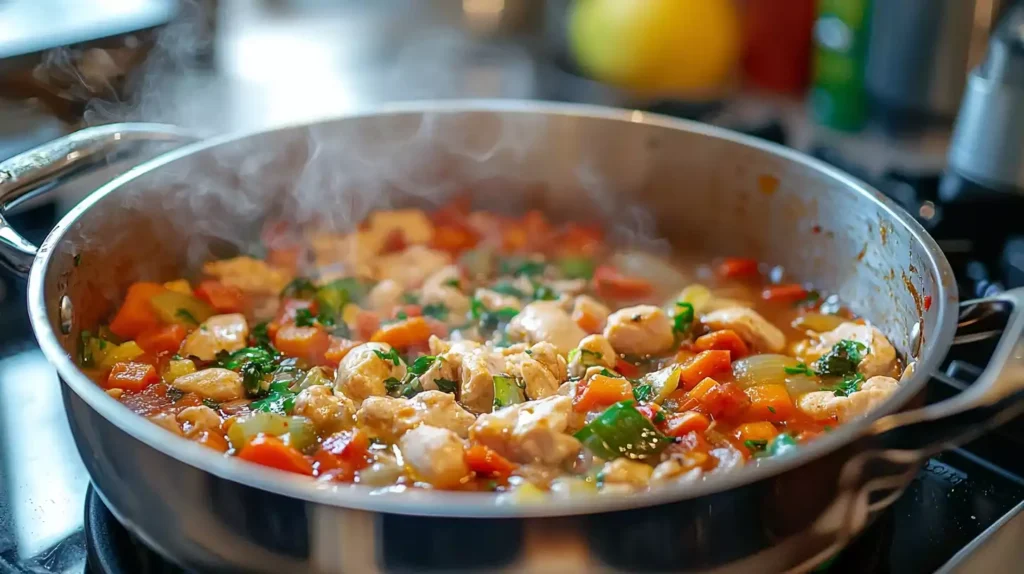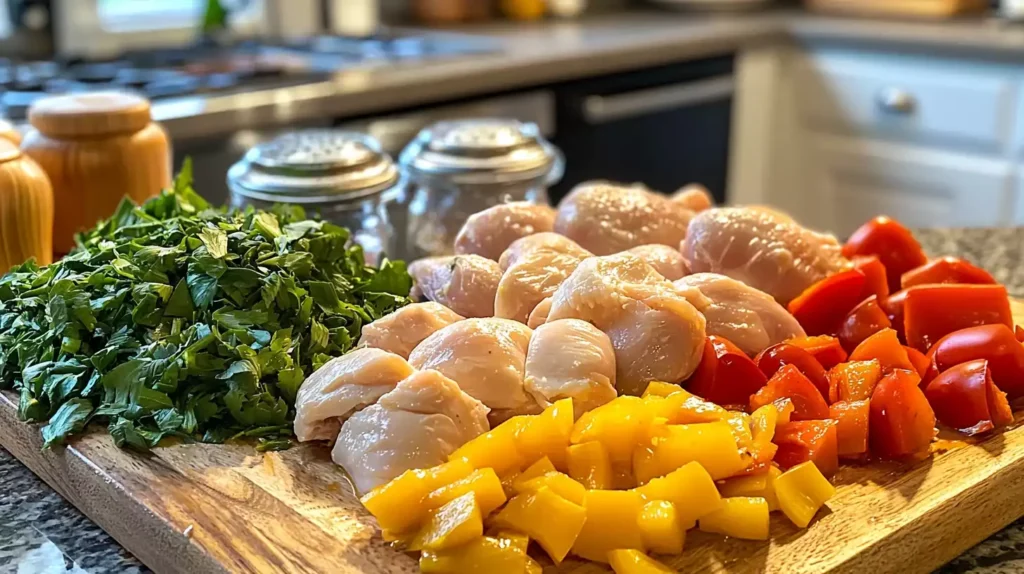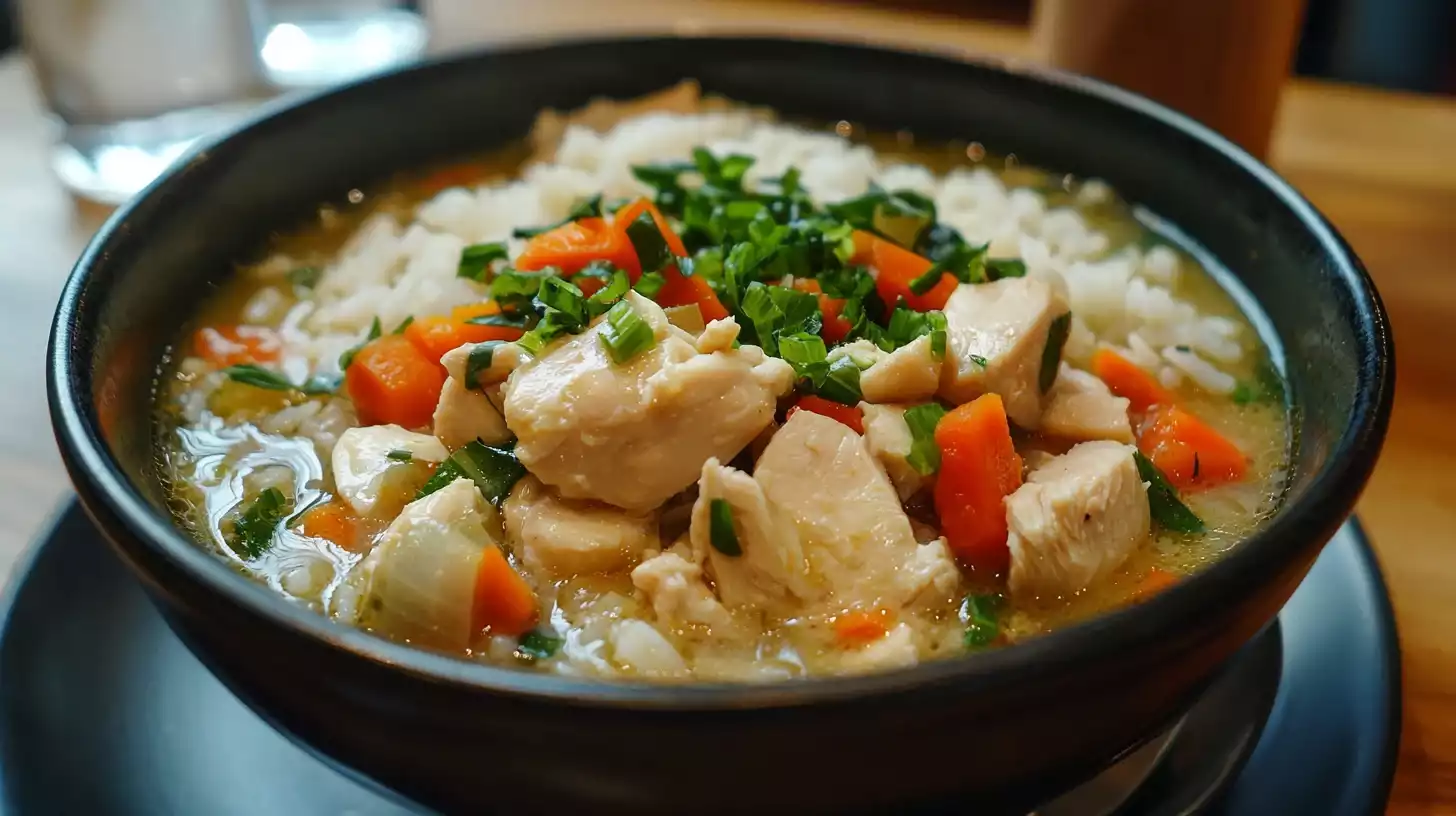Do You Cook Chicken Before Soup? Deciding whether to cook the chicken before putting it in soup is a common question for both novice and experienced cooks. The answer, surprisingly, isn’t a simple yes or no. The best method often depends on the kind of soup you’re making, the type of chicken you’re using, and the flavor profile you’re aiming for.
This comprehensive guide will delve into the nuances of cooking chicken for soup, providing seven essential tips to ensure your dish is a success every single time. Let’s explore the different techniques and find the best approach for your culinary needs.
Table of Contents
Understanding the Options: Pre-Cooked vs. Raw Chicken
When making chicken soup, you essentially have two main paths: adding pre-cooked chicken or using raw chicken that cooks directly in the broth. Both methods yield delicious results, but each impacts the final product differently. The pre-cooked approach is perfect for those seeking a quicker cooking time and a clear broth, while the raw chicken technique offers a deeper, more robust flavor. Let’s break down these two choices a bit more.

Do You Cook Chicken Before Soup? Pre-Cooked Chicken
Using pre-cooked chicken in soup allows you to control its doneness and texture beforehand. This means you can use leftover roasted chicken, grilled chicken, or even poached chicken. It’s an excellent time-saver, especially on busy weeknights. The flavor of pre-cooked chicken tends to be less infused into the broth itself, which some prefer for a lighter taste. When adding pre-cooked chicken, you generally add it near the end of cooking, just to heat it through. This method is also great for when you want the chicken to have a specific texture, like crispy skin from a roast.
Raw Chicken
Cooking raw chicken directly in the soup allows for a deeper infusion of chicken flavor into the broth. It’s a traditional method that results in incredibly flavorful soup. Using raw chicken thighs, breasts, or even a whole chicken introduces the natural juices and fats from the chicken to the soup, enriching it with savory goodness.
However, it does take longer, as the chicken needs sufficient time to cook completely. Cooking raw chicken requires a bit more attention to ensure it’s thoroughly cooked and doesn’t dry out. This process also tends to produce a slightly more cloudy broth, which many find desirable.
For a flavorful and hearty soup, raw chicken is a great approach. If you are unsure how long to cook raw chicken check out this guide on How Long to Cook Chicken for a great guide.
Seven Ultimate Tips for Cooking Chicken in Soup
Now that you understand the two main approaches, let’s get into the details with seven powerful tips to elevate your chicken soup game. These tips will help you get the perfect texture and flavor, no matter your cooking method.
These strategies have been proven by many home cooks and are designed to simplify the soup-making process.

1. Choose the Right Chicken Pieces
The type of chicken you use can dramatically affect the flavor and texture of your soup. For a rich, flavorful broth, bone-in, skin-on pieces like thighs or drumsticks are ideal when cooking raw chicken in the soup. The bones release collagen and marrow that enrich the broth, while the skin adds flavor. If you prefer a leaner option or are using pre-cooked chicken, boneless, skinless chicken breasts or tenderloins work well. They provide a good source of protein without the added fat. When you start with raw chicken remember to check out How Long to Cook Chicken Thighs.
2. Searing for Extra Flavor
For a richer flavor, whether using pre-cooked or raw chicken, consider searing the chicken before adding it to the soup. Searing creates a Maillard reaction, which adds a deep, nutty flavor that enhances the overall taste of the soup. For pre-cooked chicken, a quick sear in a hot pan with a touch of oil or butter before adding it to the soup will do the trick. If using raw chicken, sear it directly in the pot before adding the vegetables and broth. This searing step doesn’t take much time but pays off big in flavor. Remember, the goal is not to fully cook the chicken at this stage but rather to build a flavor base.
3. Timing is Everything: Adding Pre-cooked Chicken
When using pre-cooked chicken, it’s crucial to add it at the right time. Adding it too early might make it overcook and become dry and stringy. The goal is to heat the chicken through without affecting the texture. Typically, adding it in the last 10-15 minutes of cooking is sufficient. If you have large pieces, you may need to add them a bit earlier. Check the internal temperature to make sure it reaches 165°F (74°C) before serving. If the chicken is fully cooked it’s best to wait to add it in the last few minutes before serving.
4. When Adding Raw Chicken: Patience is Key
When using raw chicken, ensure it’s fully cooked before consuming. This usually takes about 20-30 minutes, depending on the size of the pieces. Insert a meat thermometer into the thickest part of the chicken to check the temperature; it should read 165°F (74°C).
Simmering the chicken gently will prevent it from toughening and ensure it cooks evenly, especially chicken breast. It is important not to rush the process, as cooking the chicken thoroughly is essential for safety and flavor.
Make sure to check the chicken after a while it’s not cooked before adding the rest of the ingredients.
5. Don’t Overcook the Chicken: A Common Mistake
One common mistake is overcooking the chicken, which leads to dry, rubbery meat. Overcooked chicken is often less flavorful and less enjoyable. Whether pre-cooked or raw, be sure to watch it closely.
If you’re using pre-cooked chicken, you’re only looking to heat it through; for raw chicken, aim for the minimum internal temperature (165°F/74°C) and then remove it from the heat.
Using an instant read thermometer is an effective way to avoid overcooking it. To avoid overcooking when adding raw chicken to a soup, you can also pull it out of the soup once it reaches the right temperature and then shred it. Add it back to the soup at the very end.
6. Seasoning and Flavoring Your Chicken
Seasoning your chicken before adding it to the soup enhances the overall flavor of the broth. Whether using pre-cooked or raw, a simple seasoning of salt, pepper, and other herbs can make a significant difference.
A flavorful broth depends on adding spices and herbs at the right time. When you cook raw chicken directly in the soup, it will absorb the flavors. For pre-cooked chicken, seasoning both the chicken and the soup separately can help you achieve your desired flavor balance.
This step is crucial and makes a big impact on the final dish.
7. Skim the Scum for a Clearer Broth
When cooking raw chicken in soup, some impurities may rise to the surface. This “scum” consists of proteins and fats that can make your broth cloudy.
To achieve a clearer soup, skim the surface with a ladle or spoon throughout the cooking process. Doing so ensures that your soup not only tastes great but looks more appealing.
This step is optional but often makes a significant difference in the final presentation of your soup. Removing any scum will help produce a nice clear soup, especially if you want to avoid the cloudy appearance.
Frequently Asked Questions (FAQs)
Here are some frequently asked questions that will help you further understand the process of cooking chicken in soup. We’ve compiled these questions to cover the most common concerns.
Can I add rice directly to soup?
Yes, you can add rice directly to soup, but it depends on the type of rice and the cooking method. White rice will cook quickly and may become mushy if added too early, while brown rice will take longer to cook. You can try different types of rice in your soup. The best way to avoid overcooking your rice in a soup is to cook the rice separately and add it when serving.
How do you keep rice from getting mushy in soup?
To prevent rice from becoming mushy in soup, cook it separately and add it at the end, just before serving. If you do cook it in the soup, use a rice with a lower starch content, like basmati. It’s also important not to overcook the rice; keep an eye on it, and use a timer. Adding too much rice to the soup will also make it mushy, so it is important to consider how much liquid to rice ratio to use.
How to thicken up chicken and rice soup?
There are several ways to thicken chicken and rice soup. You can add a slurry of cornstarch or flour mixed with cold water to the soup while simmering and cooking it for 2-3 minutes. Adding pureed vegetables like potatoes or carrots to the broth will also naturally thicken it. Simmering the soup for a longer time, uncovered, can also reduce the liquid and thicken it.
Variations and Creative Twists
Soup is incredibly versatile, and there are many ways to tweak it to suit your taste. You can use different types of protein, add more vegetables, or change the broth to create entirely different flavors. These options allow you to tailor the soup to your preferences.
Consider adding different grains like barley or quinoa for a nutritional boost. Or add a dollop of fresh pesto or a swirl of cream at the end. Experiment with adding lemon juice or a dash of hot sauce for a bit of zest. There’s no limit to what you can do with your chicken soup.
Conclusion: Perfect Chicken Soup Every Time
Deciding whether to cook the chicken before putting it in soup is a personal choice based on your preferences and the desired outcome. With these seven tips, you can confidently make delicious chicken soup every time, whether you are cooking the chicken directly in the soup or adding pre-cooked chicken.
Remember to use fresh ingredients, season properly, and taste often. The best way to get a perfect chicken soup is by practice. Now you can confidently prepare your next batch of delicious, savory chicken soup.
If you enjoy making soups you may want to check out our Pastina Soup for a convenient way to enjoy a hearty soup.
For More Articles Links:

